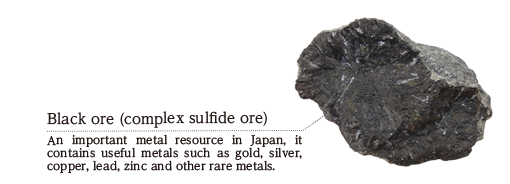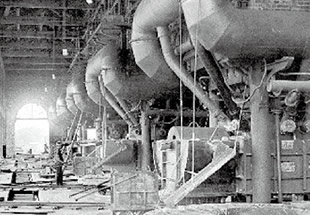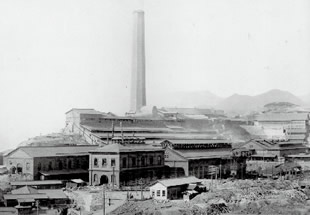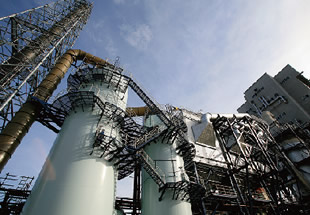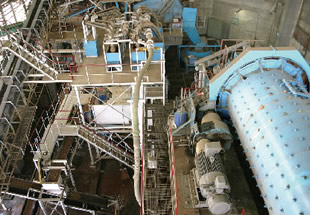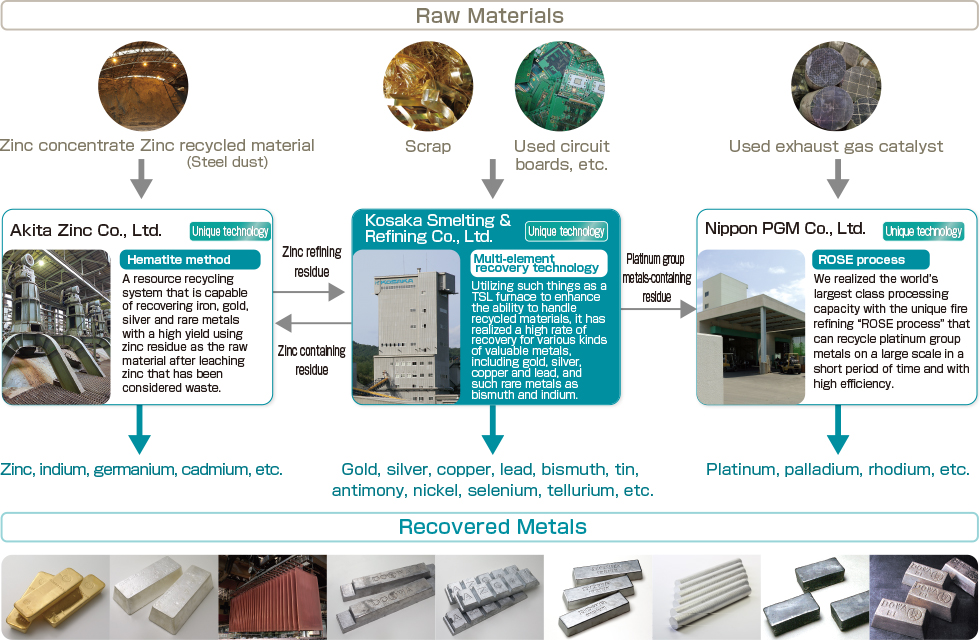The Kosaka mine in Akita, the place where we started, produced ore called “earthy ore” which contained a lot of silver. After 1890, the depletion of the ore began, and also the adaptation of the gold standard made the price of silver plummet. As a result, the mine was in danger of being closed. As a consequence, we switched our mining and smelting target ore to the abundant “black-ore”, found in the deeper area than that of the “earthy ore”.
While black ore is rich in useful metals including gold, silver, copper, lead, zinc and rare metals, it is difficult to separate them because the many impurities the ore contains. Even now, it is said that this ore is difficult to smelt. With the underdeveloped technical abilities at that time, only a small part of the ore could be used, and it was thought to be impossible to commercialize it.
In 1902, amid calls for the Kosaka mine to be closed, DOWA’s engineers succeeded in developing a unique and innovative smelting method that was called the “pyritic smelting method”. It is said that the success of the pyritic smelting method opened up a way after that for the continued development in Japan of the copper blast furnace smelting method.
Due to the development of this technology, the scale of production was gradually expanded with such things as the construction of a large blast furnace by Kosaka Smelting & Refining, establishing it as one of the leading copper smelters in Japan. Furthermore, while expanding the smelting business to such things as gold and silver, this greatly contributed to the economic development of Japan, and in 1907 we recorded the country’s largest amount of production. After that, with further research of smelting methods and improvements, in 1952 we established a wet smelting technology that included sulfatizing roasting, leaching and the electrolysis method to efficiently extract copper and zinc from black ore, with the aim of making full use of black ore.
With the changing times, in 1990 mining at the Kosaka mine (Uchinotai) came to an end, but the smelting technology that started with black ore has been inherited by the current metal recycling of DOWA.
![[Special Feature]The Advancement of DOWA Creation and Challenges Inheritance of the original standpoint](../img/sepcial/ttl_special02.png)
